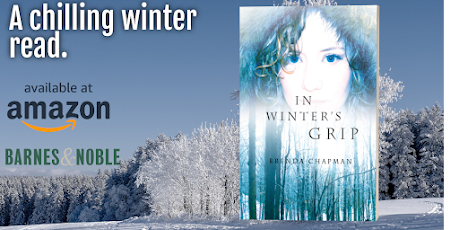Adding description to a story is an art. Too much, and readers skip over it. Too little, and the sense of place and mood aren’t adequately drawn. What techniques do you use, and please provide examples from your work.
Brenda Chapman
Writers are warned early on not to add too much description because readers tune out. This might not be as true for literary fiction as it is for crime fiction, but I'd wager even these authors need to be careful not to overdo.
Readers (myself included) love a moody, scented, sensuous sense of place. Immersing one's imagination anywhere from a lavender field in France to a haunted house on Elm Street to a cafe in the Byward Market and the author's job is to give enough sentient detail to make a reader feel as if they are there.
I work hard to select the correct details to draw a reader in, using the five senses as much as possible without overdoing. A lot goes on instinct. My primary method is to slip in the description, usually in a line or two between the dialogue or action. Here's a bit tucked into my protagonist's bike ride:
The bushes and trees were seminude, their leaves spiralling in singles or clusters to the ground like so much confetti. The water in the canal was dark and muddy and smelled of dead fish.
Describing a room is a challenge. Giving enough details so the reader can picture it without boring them. A trick is to act like a camera - start at one point and describe as your eyes circle the space. Here's another passage from Blind Date:
To Ella's eye, the room was outlandish and garish, but everything somehow worked. The art on the walls was modern and vibrant, oil paint laid on thickly in wide brush strokes. There were high ceilings and floor-length drapes of crimson velvet, matched by jewel-toned furniture: a couch in emerald green and Queen Anne chairs in peacock blue. Plush, white, shag rugs lay scattered across the dark hardwood floor. Tony said Alex agreed to let them have the floors redone but refused to pay for the work, so he and Sander went ahead anyhow. Unlike her cramped, dark garret, this unit was blessed with floor-to-ceiling French doors that led onto a small balcony where Tony grew herbs and cherry tomatoes. Some classical music was playing in the background as she sank into one of the chairs and accepted a full glass of wine.
That was actually one of my longish bits of description, but has kind of stuck with me. I don't know if this happens to other authors, but there are bits of writing - scenes - that come back to me now and then. Often the passages evoke a mood. This one is from my standalone mystery, In Winter's Grip:
The light was starting to fade, and shafts of golden, watery sunlight broke through the trees. The tops of the spruce and pine formed a black, jagged line against the sky. The heavy cloud cover had progressed rapidly over the course of the afternoon, promising more snow. It would be a dark, difficult drive home on the winding, country road.
And sometimes, you just have to get ominous - also from In Winter's Grip:
I forced myself to leave the bedroom and walk the length of the hallway, eerily layered in darkness. I stood at the head of the steep stairs and peered down into the shadowy blackness. "Tobias, is that you?" I called, my voice echoing hollowly in the stairwell. "Claire? Is anybody there?" I could sense another person in the house.
Website: www.brendachapman.ca
Instagram & Facebook: BrendaChapmanAuthor
Twitter: brendaAchapman


3 comments:
Using your senses to describe a scene gts as close as we writers can to letting our readers actually experience it. Nice examples. Brenda!
So true, Brenda. It's about the words chosen to paint the picture while keeping the story moving forward.
thanks Susan and Dietrich!
Post a Comment